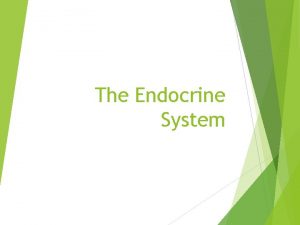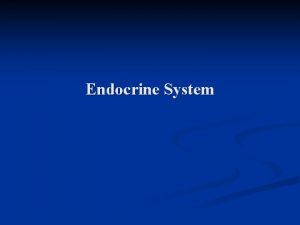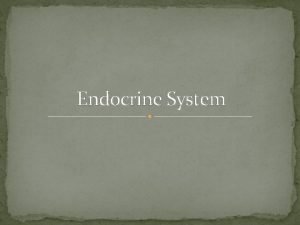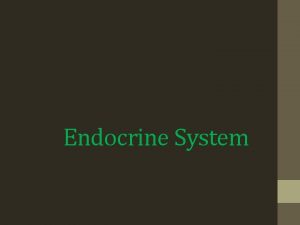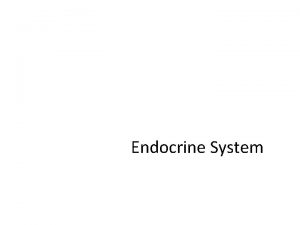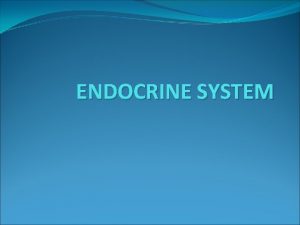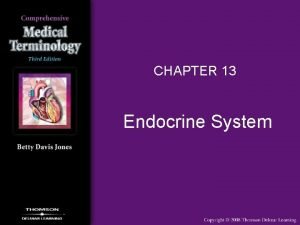CHAPTER 45 HORMONES AND ENDOCRINE SYSTEM HORMONES You









- Slides: 9

CHAPTER 45 HORMONES AND ENDOCRINE SYSTEM

HORMONES • You only need a little bit of the hormone to cause a response (remember how the signal gets amplified! Look back at chapter 11) • Protein-based hormones • Receptor on the plasma membrane (don’t go inside!) • Water-soluble • Lipid-based hormones • Receptor is inside the cell (go inside the cell!)

SIGNALING REVIEW

RECEPTORS

THE MASTER GLAND (PITUITARY) • Under the hypothalamus • Posterior Pituitary • Directly connected to hypothalamus by neurosecretory cells • Only STORES hormones that are produced by the hypothalamus • Anterior Pituitary • Indirectly connected to hypothalamus (still under its control) by capillary portal system • Makes its own hormones and releases them

POSTERIOR PITUITARY • Antidiuretic Hormone (ADH) • Targets kidney tubules • Retention of water • Oxytocin • “Swift birth” • Targets mammary glands, uterine muscles • Let down of milk

ANTERIOR PITUITARY • Adrenocorticotrophic Hormone • Assists in synthesizing corticosteroids, which are responsible for stress response • Thyroid Stimulating Hormone • Regulates body temperature, thirst and hunger • Follicle Stimulating Hormone • Stimulates the maturation of egg and sperm • Luteinizing Hormone • Stimulates secretion of sex steroids from the gonads • Prolactin • Stimulates milk production in breasts • Melanocyte Stimulating Hormone • Regulates the function of skin pigment cells (melanocytes) • Growth Hormone • Growth in bones, tissues, and other body systems

TROPIC VS NONTROPIC • Tropic • Target endocrine glands • Ex. TSH stimulates the thyroid to produce thyroxine • Nontropic • Direct effect on target cells, tissues • Ex. Melanocyte Stimulating Hormone (MSH)- affects skin cells, Prolactin- Affects cells in the mammary glands to make milk, Thyroxine • Both • Ex. Growth hormone – tells bone and tissue cells to grow (nontropic), causes liver to make insulinlike growth factors which tell other cells to grow (tropic)

ISSUES • Acromegaly • Too much Human Growth Hormone • You can see it in the hands, jaw, and brow ridge • Can by caused by a pituitary tumor, which causes the production of too much growth hormone
 Calcitonin and pth are antagonistic hormones
Calcitonin and pth are antagonistic hormones Chapter 45 hormones and the endocrine system
Chapter 45 hormones and the endocrine system Endocrine system and reproductive system
Endocrine system and reproductive system Adh function
Adh function Endocrine system vs nervous system
Endocrine system vs nervous system Lymphatic system vs endocrine system
Lymphatic system vs endocrine system Mechanism of action of hormones
Mechanism of action of hormones Endocrine
Endocrine Chapter 7 13 endocrine system
Chapter 7 13 endocrine system Chapter 11 endocrine system
Chapter 11 endocrine system










